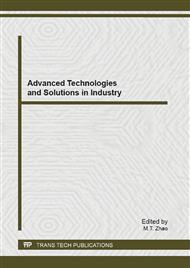p.772
p.775
p.781
p.786
p.790
p.794
p.798
p.804
p.808
The Effects of Advanced Materials on Aircraft Production Cost
Abstract:
Properties and application of advanced materials, such as composites, titanium, aluminum-lithium, is introduced. The weighted material cost factor is defined and the equation is given. A quantitative analysis of advanced materials on aircraft production cost is given based on DAPCA(Development and Procurement Costs of Aircraft)IV model by Rand Corporation. Calculation and analysis are given based on some active military aircraft to the feasibility and validity of the optimized model.
Info:
Periodical:
Pages:
798-803
Citation:
Online since:
June 2013
Authors:
Keywords:
Price:
Сopyright:
© 2013 Trans Tech Publications Ltd. All Rights Reserved
Share:
Citation:


